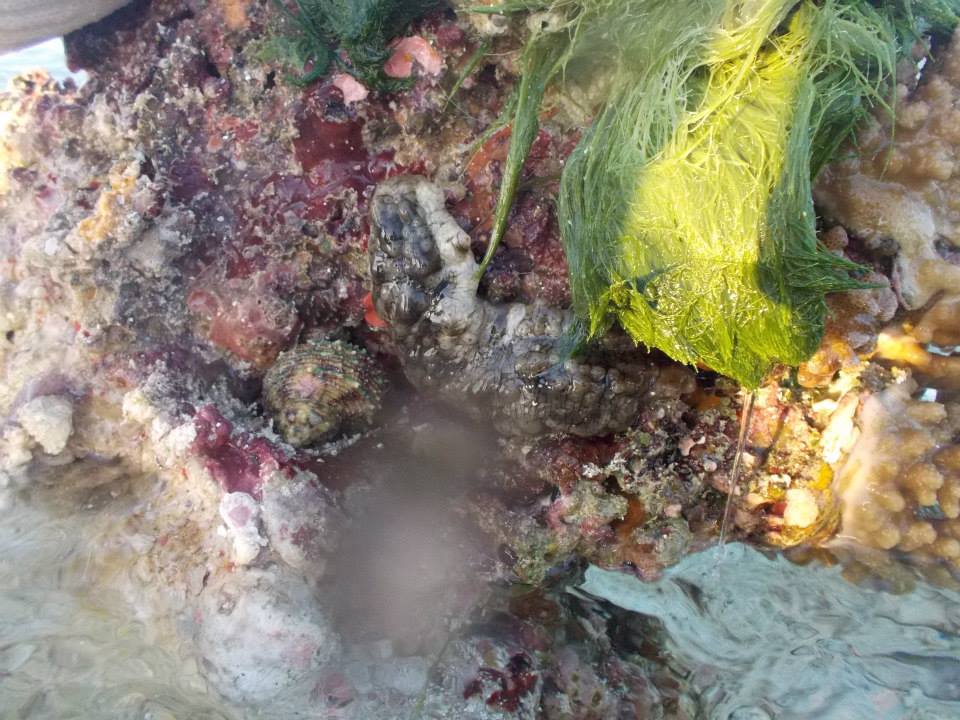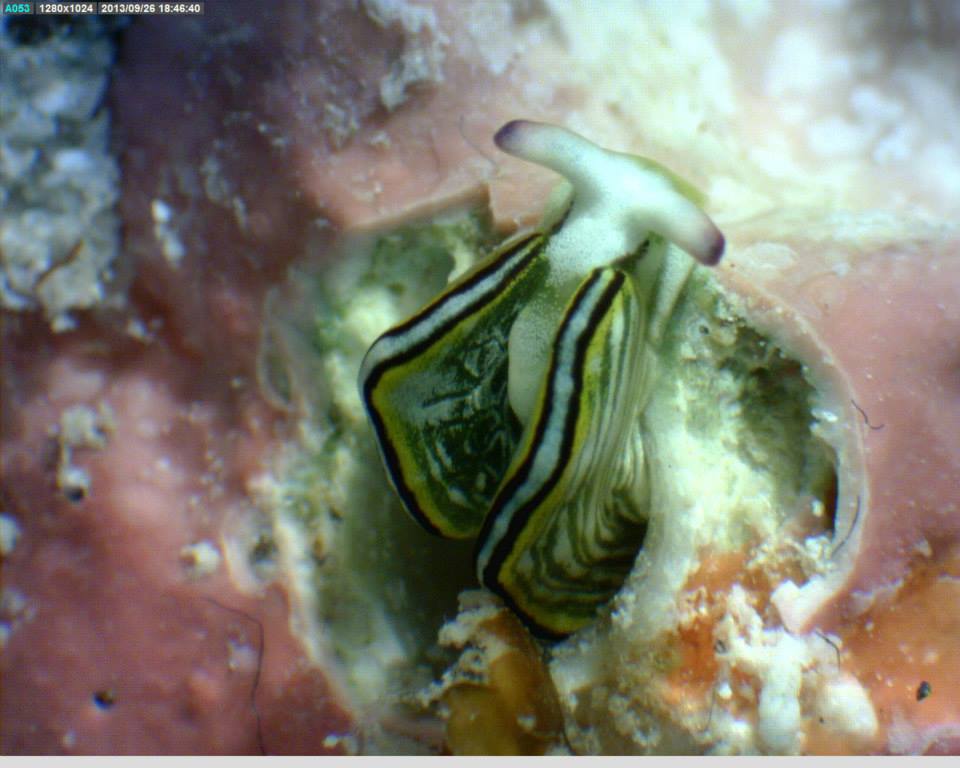Local Distribution and Microhabitat
Elysia sp. is found on the outer reef crest environment at Heron Island. The three sample specimens were collected from coral rubble boulders taken from Fourth Point, north-east of Heron Island. This species is a member of the cryptic community, and is found on the underside of coral rubble boulders. The animals collected were found in association with Chlorodesmis spp and Halimeda spp and were often seen on or near various ascidians. During this study Elysia sp. were often observed to hide inside crevices and at times were quite elusive and difficult to locate, even in very small pieces of rubble.
Based on anecdotal observations and current knowledge of the genus, it is thought that Elysia sp. 'farm' chloroplasts in the same way that other members of this genus do. This reduces both their geographic distribution as well as the available microhabitat. Sacoglossans generally do not occur below the euphotic zone, and globally tend to have a tropical to sub-tropical distribution [2]. Given this, it is likely that this species undertakes significant movements during the day to the upper surface of these boulders where light attenuation is much greater.
All three specimens collected for this study were found on the same coral rubble boulder. Given their size and cryptic nature, it is distinctly possible that other animals would have been found had a more intensive search of the entire boulder been practical.

Figure 1. An example of the microhabitat of Elysia sp., the underside of a coral rubble boulder taken from the reef crest environment at Heron Island.

Figure 2. The cryptic nature of Elysia sp. contributes to their elusiveness. An animal emerging from a crevice in the rubble where it had been hidden for several hours.
|